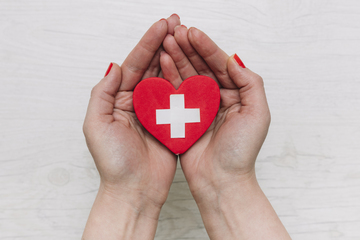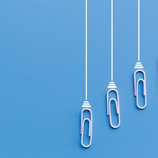We found 59 results that contain "edited"
Posted on: #iteachmsu


Natural resources gifted by god -- Edited
Natural resources are the raw materials and sources of energy that we use. Petrol, metals, soil, sand, wind, water, and everything in between are natural resources. Manufactured items such as plastic, sheet metal, fabrics, microchips, electricity and concrete are not natural resources, but are most definitely derived from natural resources.
Natural resources are the raw materials and sources of energy that we use.
Petrol, metals, soil, sand, wind, water and everything in between are natural resources. Manufactured items such as plastic, sheet metal, fabrics, microchips, electricity and concrete are not natural resources, but are most definitely derived from natural resources.
Think about the relationship between natural resources and manufactured products. In essence, we call them “natural” resources because they are things human society uses that are created (or were created in the case of fossil fuels) without human intervention.
Perpetually Renewable Resources
Perpetually renewable resources are the easiest resources to understand; these are natural resources that are constantly replenished by the Sun’s and Earth’s natural processes. For example, every day the sun delivers an average of 198 Watts of energy to every square meter (m
) of the Earth’s surface. For comparison a standard incandescent light bulb in a bedside lamp uses 40 Watts, or a 100kg person climbing a step in 2 seconds uses roughly 200 Watts. Every day without fail for the last 5 billion years (plus or minus a few hundred million years) the Sun has delivered this solar energy.
Together with geothermal energy (heat from the Earth’s interior), the Sun’s perpetual energy powers the winds, ocean currents, precipitation and most of the Earth’s plant life. Solar and geothermal natural resources currently energise a significant and growing percentage of many nations’ electrical grids. It is perpetually renewable in the sense that no matter how much we use in terms of human time-scales (e.g decades to millennia), the Sun and the Earth will always make more.
Intermediate Renewable Resources
Intermediate renewable resources are only renewable resources if we don’t use them too quickly. They are resources such as freshwater, soil, crops and trees for timber. If we didn’t use them, they would be perpetually renewable, but because they require time (on human time-scales) to regenerate or grow, we can overuse them until they are no longer available.
Freshwater is a great example of an intermediate renewable resource. Through the water cycle, the sun evaporates water from the surface of saltwater oceans that travels over land and falls back to earth as freshwater rain. This rain fills the lakes, rivers and aquifers we use for agriculture, industry and drinking water. If we use this freshwater at the same rate as the rain recharging it, then we won’t run out. If we use the freshwater faster than it recharges, then we will. Intermediate renewable resources must be carefully managed to ensure they are not depleted.
Non-renewable Resources
The last category of natural resources are the non-renewables. These are resources that will not regenerate on human time-scales. Once they have been depleted they will no longer be available and no more will be made. The most common examples of non-renewable resources are fossil fuels, so-called because most were created by processes that take millions of years. Fossil fuels include crude oil, natural gas, coal and uranium. Other non-renewable resources include metals, lithium and rare-Earth elements (REE’s), but it’s important to remember that while we may eventually run out of mineable metals and REE’s, with careful waste management, these can be recovered through recycling. However, it is not the same for fossil fuels as using them for energy alters their chemistry so they are no longer useful.
Natural resources are the raw materials and sources of energy that we use.
Petrol, metals, soil, sand, wind, water and everything in between are natural resources. Manufactured items such as plastic, sheet metal, fabrics, microchips, electricity and concrete are not natural resources, but are most definitely derived from natural resources.
Think about the relationship between natural resources and manufactured products. In essence, we call them “natural” resources because they are things human society uses that are created (or were created in the case of fossil fuels) without human intervention.
Perpetually Renewable Resources
Perpetually renewable resources are the easiest resources to understand; these are natural resources that are constantly replenished by the Sun’s and Earth’s natural processes. For example, every day the sun delivers an average of 198 Watts of energy to every square meter (m
) of the Earth’s surface. For comparison a standard incandescent light bulb in a bedside lamp uses 40 Watts, or a 100kg person climbing a step in 2 seconds uses roughly 200 Watts. Every day without fail for the last 5 billion years (plus or minus a few hundred million years) the Sun has delivered this solar energy.
Together with geothermal energy (heat from the Earth’s interior), the Sun’s perpetual energy powers the winds, ocean currents, precipitation and most of the Earth’s plant life. Solar and geothermal natural resources currently energise a significant and growing percentage of many nations’ electrical grids. It is perpetually renewable in the sense that no matter how much we use in terms of human time-scales (e.g decades to millennia), the Sun and the Earth will always make more.
Intermediate Renewable Resources
Intermediate renewable resources are only renewable resources if we don’t use them too quickly. They are resources such as freshwater, soil, crops and trees for timber. If we didn’t use them, they would be perpetually renewable, but because they require time (on human time-scales) to regenerate or grow, we can overuse them until they are no longer available.
Freshwater is a great example of an intermediate renewable resource. Through the water cycle, the sun evaporates water from the surface of saltwater oceans that travels over land and falls back to earth as freshwater rain. This rain fills the lakes, rivers and aquifers we use for agriculture, industry and drinking water. If we use this freshwater at the same rate as the rain recharging it, then we won’t run out. If we use the freshwater faster than it recharges, then we will. Intermediate renewable resources must be carefully managed to ensure they are not depleted.
Non-renewable Resources
The last category of natural resources are the non-renewables. These are resources that will not regenerate on human time-scales. Once they have been depleted they will no longer be available and no more will be made. The most common examples of non-renewable resources are fossil fuels, so-called because most were created by processes that take millions of years. Fossil fuels include crude oil, natural gas, coal and uranium. Other non-renewable resources include metals, lithium and rare-Earth elements (REE’s), but it’s important to remember that while we may eventually run out of mineable metals and REE’s, with careful waste management, these can be recovered through recycling. However, it is not the same for fossil fuels as using them for energy alters their chemistry so they are no longer useful.
DISCIPLINARY CONTENT
Posted on: Edited -- The Compl...


Edited-- Playlist: The Build Muscle Training Plans
Edited--- In these plans, you'll alternate weeks between doing a combination of heavy weights and low repetitions and low weights with high repetitions to build muscle. This strategy delivers both endurance, strength and hypertrophy. Combine these efforts with intelligent nutrition, and you'll expose your body to the variables you need to hit your seemingly contradictory goals and realise the overall objective: looking and feeling your absolute best. You can use our guide to RPE to decide when to increase your weights:
JUSTICE AND BELONGING
Posted on: #iteachmsu

What are the 12 Agile Principles? -- edited
The Agile Alliance defines 12 lightness principles for those who need to attain agility:
Our highest priority is to satisfy the client through early and continuous delivery of valuable computer software.
Welcome dynamic necessities, even late in development. Agile Processes harness modification for the customer’s competitive advantage.
Deliver operating computer software often, from a pair of weeks to a couple of months, with a preference to the shorter timescale.
Business individuals and developers should work along daily throughout the project.
The build comes around actuated people. offer them the setting and support they have, and trust them to urge the task done.
the foremost economical and effective methodology of conveyancing info to and among a development team is face-to-face speech.
Working with computer software is the primary life of progress.
Agile processes promote property development. The sponsors, developers, and users will be able to maintain a relentless pace indefinitely.
Continuous attention to technical excellence and smart style enhances nimbleness.
Simplicity—the art of maximizing the number of work not done—is essential.
the most effective architectures, necessities, and styles emerge from self–organizing groups.
At regular intervals, the team reflects on a way to become simpler, then tunes and adjusts its behavior consequently.
Our highest priority is to satisfy the client through early and continuous delivery of valuable computer software.
Welcome dynamic necessities, even late in development. Agile Processes harness modification for the customer’s competitive advantage.
Deliver operating computer software often, from a pair of weeks to a couple of months, with a preference to the shorter timescale.
Business individuals and developers should work along daily throughout the project.
The build comes around actuated people. offer them the setting and support they have, and trust them to urge the task done.
the foremost economical and effective methodology of conveyancing info to and among a development team is face-to-face speech.
Working with computer software is the primary life of progress.
Agile processes promote property development. The sponsors, developers, and users will be able to maintain a relentless pace indefinitely.
Continuous attention to technical excellence and smart style enhances nimbleness.
Simplicity—the art of maximizing the number of work not done—is essential.
the most effective architectures, necessities, and styles emerge from self–organizing groups.
At regular intervals, the team reflects on a way to become simpler, then tunes and adjusts its behavior consequently.
JUSTICE AND BELONGING
Posted on: Smoke test group on...


Smoke test playlist: 12 Jyotirlingas of Lord Shiv -- Edited
A Jyotirlinga or Jyotirling or Jyotirlingam (Sanskrit: ज्योतिर्लिङ्ग) are shrines where Lord Shiva, is worshipped in the form of a Jyotirlingam. ‘Jyothi’ means ‘Radiance’ and Lingam, the Shiva Lingam-‘the mark or sign’ of The Almighty or the phallus symbol. Jyotir Lingam means the The Radiant sign of The Almighty. There are twelve traditional Jyotirlinga shrines in India.
Lord Shiva first manifested himself as a Jyotirlinga on the night of the, Aridra Nakshatra thus the special reverence for the Jyotirlinga. There is nothing to distinguish the appearance, but it is believed that a person can see these lingas as columns of fire piercing through the earth after he reaches a higher level of spiritual attainment. There are twelve Jyotirlingas in India and they are spread all over India.
Lord Shiva first manifested himself as a Jyotirlinga on the night of the, Aridra Nakshatra thus the special reverence for the Jyotirlinga. There is nothing to distinguish the appearance, but it is believed that a person can see these lingas as columns of fire piercing through the earth after he reaches a higher level of spiritual attainment. There are twelve Jyotirlingas in India and they are spread all over India.
NAVIGATING CONTEXT
Posted on: Management is the p...


What is Management? Definition, Functions And Levels Explained -- edited
Companies and organisations need effective management to achieve business goals. There are different levels of management that aim to organise and coordinate the business functions of a company. If you're interested in becoming a manager, knowing about what a manager does can help you get an idea about the role. In this article, we discuss what management is and its unique characteristics, objectives, levels and functions. --- edited
PEDAGOGICAL DESIGN
Posted on: Smoke test group : ...


Smoke test: What is Smart Farming? It's The Future of Agriculture -- edited
The Internet of Things (IoT) has provided ways to improve nearly every industry imaginable. In agriculture, IoT has not only provided solutions to often time-consuming and tedious tasks but is totally changing the way we think about agriculture. What exactly is a smart farm, though? Here is a rundown of what smart farming is and how it's changing agriculture.
What is a Smart Farm?
Smart farming refers to managing farms using modern Information and communication technologies to increase the quantity and quality of products while optimizing the human labor required.
Among the technologies available for present-day farmers are:
Sensors: soil, water, light, humidity, temperature management
Software: specialized software solutions that target specific farm types or applications agnostic IoT platforms
Connectivity: cellular, LoRa
Location: GPS, Satellite
Robotics: Autonomous tractors, processing facilities
Data analytics: standalone analytics solutions, data pipelines for downstream solutions -- edited
What is a Smart Farm?
Smart farming refers to managing farms using modern Information and communication technologies to increase the quantity and quality of products while optimizing the human labor required.
Among the technologies available for present-day farmers are:
Sensors: soil, water, light, humidity, temperature management
Software: specialized software solutions that target specific farm types or applications agnostic IoT platforms
Connectivity: cellular, LoRa
Location: GPS, Satellite
Robotics: Autonomous tractors, processing facilities
Data analytics: standalone analytics solutions, data pipelines for downstream solutions -- edited
DISCIPLINARY CONTENT
Posted on: Introduce Books, St...


Books play a vital role in both brain development and language skills -- Edited
Introduce Books, Storytelling And Narration
Books play a vital role in both brain development and language skills. They’re also the first step towards gross motor skill development (holding books, turning pages). I had introduced cloth books & soft sponge books to her when she was two months old, board books from five months, and paper books after she turned a year old. She liked colourful objects, animals, birds & shapes till around nine months and then loved listening to simple short stories from illustrated books (no fairy tales). And activity books (match the shadows, pairing similar objects) after she turned 2.
3. Ask Questions To Stimulate The Thinking Process
As I introduced the books, I named the objects she was seeing in all the languages I knew. Then I gradually started describing them (shape, colour, use). I explained the environment in which they are found and constantly asked her questions. For example, pointing at a rabbit, instead of asking “what is this?” I asked her, “it has long ears, a short fluffy tail, is soft & white like cotton. What is it?”. I continued with the exercise even when we went out to some shop or mall. We played the “I spy” game in the house & outdoors. I would describe objects and ask her to identify them. It was fun.
4. Let Your Kids Explore - Touch, Feel, Smell, Taste
I encouraged the natural tendency that kids have to explore the world around them. (But of course, with discretion). I never stopped her from playing with stones or mud in the garden, things like tasting sour lime or bitter gourd, smell a flower on the plant, etc. She learned by herself that stones were hard, mud was soft, ice was cold, the paper could be torn with hands and rubber bands were elastic & so on. Things that were not safe for her we explained to her & kept out of reach- like touching a hot cup of tea could burn her skin, pressing against a glass door could break the glass, playing with a sharp object could hurt, etc.
Books play a vital role in both brain development and language skills. They’re also the first step towards gross motor skill development (holding books, turning pages). I had introduced cloth books & soft sponge books to her when she was two months old, board books from five months, and paper books after she turned a year old. She liked colourful objects, animals, birds & shapes till around nine months and then loved listening to simple short stories from illustrated books (no fairy tales). And activity books (match the shadows, pairing similar objects) after she turned 2.
3. Ask Questions To Stimulate The Thinking Process
As I introduced the books, I named the objects she was seeing in all the languages I knew. Then I gradually started describing them (shape, colour, use). I explained the environment in which they are found and constantly asked her questions. For example, pointing at a rabbit, instead of asking “what is this?” I asked her, “it has long ears, a short fluffy tail, is soft & white like cotton. What is it?”. I continued with the exercise even when we went out to some shop or mall. We played the “I spy” game in the house & outdoors. I would describe objects and ask her to identify them. It was fun.
4. Let Your Kids Explore - Touch, Feel, Smell, Taste
I encouraged the natural tendency that kids have to explore the world around them. (But of course, with discretion). I never stopped her from playing with stones or mud in the garden, things like tasting sour lime or bitter gourd, smell a flower on the plant, etc. She learned by herself that stones were hard, mud was soft, ice was cold, the paper could be torn with hands and rubber bands were elastic & so on. Things that were not safe for her we explained to her & kept out of reach- like touching a hot cup of tea could burn her skin, pressing against a glass door could break the glass, playing with a sharp object could hurt, etc.
JUSTICE AND BELONGING
Posted on: #iteachmsu

Triglycerides Triglycerides are fats and oils Fatty acid and glycerol molecules are the Edited
Triglycerides
Triglycerides are fats and oils
Fatty acid and glycerol molecules are the components that make up triglycerides
Fats and oils have a number of important functions in organisms: energy storage, insulation, buoyancy, and protection
Energy storage
The long hydrocarbon chains in triglycerides contain many carbon-hydrogen bonds with little oxygen (triglycerides are highly reduced)
So when triglycerides are oxidised during cellular respiration this causes these bonds to break releasing energy used to produce ATP
Triglycerides, therefore, store more energy per gram than carbohydrates and proteins (37kJ compared to 17kJ)
As triglycerides are hydrophobic they do not cause osmotic water uptake in cells so more can be stored
Plants store triglycerides, in the form of oils, in their seeds and fruits. If extracted from seeds and fruits these are generally liquid at room temperature due to the presence of double bonds which add kinks to the fatty acid chains altering their properties
Mammals store triglycerides as oil droplets in adipose tissue to help them survive when food is scarce (e.g. hibernating bears)
The oxidation of the carbon-hydrogen bonds releases large numbers of water molecules (metabolic water) during cellular respiration
Desert animals retain this water if there is no liquid water to drink
Bird and reptile embryos in their shells also use this water
Triglycerides are fats and oils
Fatty acid and glycerol molecules are the components that make up triglycerides
Fats and oils have a number of important functions in organisms: energy storage, insulation, buoyancy, and protection
Energy storage
The long hydrocarbon chains in triglycerides contain many carbon-hydrogen bonds with little oxygen (triglycerides are highly reduced)
So when triglycerides are oxidised during cellular respiration this causes these bonds to break releasing energy used to produce ATP
Triglycerides, therefore, store more energy per gram than carbohydrates and proteins (37kJ compared to 17kJ)
As triglycerides are hydrophobic they do not cause osmotic water uptake in cells so more can be stored
Plants store triglycerides, in the form of oils, in their seeds and fruits. If extracted from seeds and fruits these are generally liquid at room temperature due to the presence of double bonds which add kinks to the fatty acid chains altering their properties
Mammals store triglycerides as oil droplets in adipose tissue to help them survive when food is scarce (e.g. hibernating bears)
The oxidation of the carbon-hydrogen bonds releases large numbers of water molecules (metabolic water) during cellular respiration
Desert animals retain this water if there is no liquid water to drink
Bird and reptile embryos in their shells also use this water
NAVIGATING CONTEXT
Posted on: 12 Best API Testing...


JMeter -- Edited
JMeter is an open-source software designed for load testing and application performance measurement. It supports API testing in Java but was originally designed to test web applications.
Features:
This software supports HTTP/HTTPS, FTP, SOAP, REST, and other protocols to perform detailed testing across different application layers.
Command-line mode loads API tests from any OS.
Scripting is supported using Groovy and BeanShell languages to implement complex test logic and workflows in API performance tests.
Continuous integration is supported through third-party open-source libraries to catch API performance issues early.
Caching and replaying of API test results are supported.
Features:
This software supports HTTP/HTTPS, FTP, SOAP, REST, and other protocols to perform detailed testing across different application layers.
Command-line mode loads API tests from any OS.
Scripting is supported using Groovy and BeanShell languages to implement complex test logic and workflows in API performance tests.
Continuous integration is supported through third-party open-source libraries to catch API performance issues early.
Caching and replaying of API test results are supported.
Authored by: Vijaya
Justice and Belonging
Posted on: #iteachmsu


History of Agile -- edited
In 1957, people started figuring out new ways to build computer programs. They wanted to make the process better over time, so they came up with iterative and incremental methods.
In the 1970s, people started using adaptive software development and evolutionary project management. This means they were adjusting and evolving how they built software.
In 1990s, there was a big change. Some people didn't like the strict and super-planned ways of doing things in software development. They called these old ways "waterfall." So, in response, lighter and more flexible methods showed up.
In the 1970s, people started using adaptive software development and evolutionary project management. This means they were adjusting and evolving how they built software.
In 1990s, there was a big change. Some people didn't like the strict and super-planned ways of doing things in software development. They called these old ways "waterfall." So, in response, lighter and more flexible methods showed up.
Posted by: Scarlet Ethan Edien
Assessing Learning
Posted on: #iteachmsu


Natural resources gifted by god --- Edited
Natural resources are the raw materials and sources of energy that we use. Petrol, metals, soil, sand, wind, water, and everything in between are natural resources. Manufactured items such as plastic, sheet metal, fabrics, microchips, electricity and concrete are not natural resources, but are most definitely derived from natural resources.
Natural resources are the raw materials and sources of energy that we use.
Petrol, metals, soil, sand, wind, water and everything in between are natural resources. Manufactured items such as plastic, sheet metal, fabrics, microchips, electricity and concrete are not natural resources, but are most definitely derived from natural resources.
Think about the relationship between natural resources and manufactured products. In essence, we call them “natural” resources because they are things human society uses that are created (or were created in the case of fossil fuels) without human intervention.
Perpetually Renewable Resources
Perpetually renewable resources are the easiest resources to understand; these are natural resources that are constantly replenished by the Sun’s and Earth’s natural processes. For example, every day the sun delivers an average of 198 Watts of energy to every square meter (m
) of the Earth’s surface. For comparison a standard incandescent light bulb in a bedside lamp uses 40 Watts, or a 100kg person climbing a step in 2 seconds uses roughly 200 Watts. Every day without fail for the last 5 billion years (plus or minus a few hundred million years) the Sun has delivered this solar energy.
Together with geothermal energy (heat from the Earth’s interior), the Sun’s perpetual energy powers the winds, ocean currents, precipitation and most of the Earth’s plant life. Solar and geothermal natural resources currently energise a significant and growing percentage of many nations’ electrical grids. It is perpetually renewable in the sense that no matter how much we use in terms of human time-scales (e.g decades to millennia), the Sun and the Earth will always make more.
Intermediate Renewable Resources
Intermediate renewable resources are only renewable resources if we don’t use them too quickly. They are resources such as freshwater, soil, crops and trees for timber. If we didn’t use them, they would be perpetually renewable, but because they require time (on human time-scales) to regenerate or grow, we can overuse them until they are no longer available.
Freshwater is a great example of an intermediate renewable resource. Through the water cycle, the sun evaporates water from the surface of saltwater oceans that travels over land and falls back to earth as freshwater rain. This rain fills the lakes, rivers and aquifers we use for agriculture, industry and drinking water. If we use this freshwater at the same rate as the rain recharging it, then we won’t run out. If we use the freshwater faster than it recharges, then we will. Intermediate renewable resources must be carefully managed to ensure they are not depleted.
Non-renewable Resources
The last category of natural resources are the non-renewables. These are resources that will not regenerate on human time-scales. Once they have been depleted they will no longer be available and no more will be made. The most common examples of non-renewable resources are fossil fuels, so-called because most were created by processes that take millions of years. Fossil fuels include crude oil, natural gas, coal and uranium. Other non-renewable resources include metals, lithium and rare-Earth elements (REE’s), but it’s important to remember that while we may eventually run out of mineable metals and REE’s, with careful waste management, these can be recovered through recycling. However, it is not the same for fossil fuels as using them for energy alters their chemistry so they are no longer useful.
Natural resources are the raw materials and sources of energy that we use.
Petrol, metals, soil, sand, wind, water and everything in between are natural resources. Manufactured items such as plastic, sheet metal, fabrics, microchips, electricity and concrete are not natural resources, but are most definitely derived from natural resources.
Think about the relationship between natural resources and manufactured products. In essence, we call them “natural” resources because they are things human society uses that are created (or were created in the case of fossil fuels) without human intervention.
Perpetually Renewable Resources
Perpetually renewable resources are the easiest resources to understand; these are natural resources that are constantly replenished by the Sun’s and Earth’s natural processes. For example, every day the sun delivers an average of 198 Watts of energy to every square meter (m
) of the Earth’s surface. For comparison a standard incandescent light bulb in a bedside lamp uses 40 Watts, or a 100kg person climbing a step in 2 seconds uses roughly 200 Watts. Every day without fail for the last 5 billion years (plus or minus a few hundred million years) the Sun has delivered this solar energy.
Together with geothermal energy (heat from the Earth’s interior), the Sun’s perpetual energy powers the winds, ocean currents, precipitation and most of the Earth’s plant life. Solar and geothermal natural resources currently energise a significant and growing percentage of many nations’ electrical grids. It is perpetually renewable in the sense that no matter how much we use in terms of human time-scales (e.g decades to millennia), the Sun and the Earth will always make more.
Intermediate Renewable Resources
Intermediate renewable resources are only renewable resources if we don’t use them too quickly. They are resources such as freshwater, soil, crops and trees for timber. If we didn’t use them, they would be perpetually renewable, but because they require time (on human time-scales) to regenerate or grow, we can overuse them until they are no longer available.
Freshwater is a great example of an intermediate renewable resource. Through the water cycle, the sun evaporates water from the surface of saltwater oceans that travels over land and falls back to earth as freshwater rain. This rain fills the lakes, rivers and aquifers we use for agriculture, industry and drinking water. If we use this freshwater at the same rate as the rain recharging it, then we won’t run out. If we use the freshwater faster than it recharges, then we will. Intermediate renewable resources must be carefully managed to ensure they are not depleted.
Non-renewable Resources
The last category of natural resources are the non-renewables. These are resources that will not regenerate on human time-scales. Once they have been depleted they will no longer be available and no more will be made. The most common examples of non-renewable resources are fossil fuels, so-called because most were created by processes that take millions of years. Fossil fuels include crude oil, natural gas, coal and uranium. Other non-renewable resources include metals, lithium and rare-Earth elements (REE’s), but it’s important to remember that while we may eventually run out of mineable metals and REE’s, with careful waste management, these can be recovered through recycling. However, it is not the same for fossil fuels as using them for energy alters their chemistry so they are no longer useful.
Authored by: Saarth
Disciplinary Content
Posted on: Edited -- Time Mana...


Edited 9 Types of Time Management Techniques
Edited -- Achieving work life balance is possible with effective time management. Learning time management tips will not only help you manage your time better but also boost personal productivity. With that said, here are some time management strategies you can try:
1. Pareto Analysis (a.k.a., the 80/20 rule)
The 80/20 rule is a technique created by the Italian economist Vilfredo Pareto. It’s the idea that 20% of actions are responsible for 80% of outcomes. The goal of Pareto analysis is to help you prioritize tasks that are most effective at solving problems.
2. Pomodoro Technique
The Pomodoro Technique was created by entrepreneur and author Francesco Cirillo. This technique uses a timer to break down your work into intervals. Each interval is known as a Pomodoro, named after the tomato-shaped timer that Cirillo created.
3. Eisenhower Matrix
Before Dwight Eisenhower became president in 1953, he served in the U.S. Army as an Allied Forces Commander during World War II. He was faced with difficult decisions every day that led him to invent what is now called the Eisenhower matrix, or the urgent-important matrix.
4. Parkinson’s Law
British historian Cyril Northcote Parkinson became famous for the phrase “work expands so as to fill the time available for its completion.” In other words, the amount of time you give yourself to complete a specific task is the amount of time it will take you to complete that task.
5. Time Blocking Method
Inventor Elon Musk is known for being productive. He manages his time so efficiently that he can work over 80 hours a week and still make time for himself. What’s his secret? Time blocking.
6. Getting Things Done (GTD) Method
Created by author David Allen, this process helps you get things done by recording tasks on paper and then breaking them down into actionable work items.
7. Rapid Planning Method (RPM)
“RPM” stands for “rapid planning method” or “result, purpose, and massive action plan.” It was developed by motivational speaker Tony Robbins as a way to train your brain to focus on a vision of what you want so you can make it real.
8. Pickle Jar Theory
This theory helps you figure out what is useful and what is not useful in your daily life. It allows you to plan tasks with time to spare and set priorities for your day.
9. Eat That Frog Technique
This technique is named after a Mark Twain quote: “Eat a live frog the first thing in the morning and nothing worse will happen to you the rest of the day.” Start your day by doing the most onerous tasks first and getting them out of the way.
1. Pareto Analysis (a.k.a., the 80/20 rule)
The 80/20 rule is a technique created by the Italian economist Vilfredo Pareto. It’s the idea that 20% of actions are responsible for 80% of outcomes. The goal of Pareto analysis is to help you prioritize tasks that are most effective at solving problems.
2. Pomodoro Technique
The Pomodoro Technique was created by entrepreneur and author Francesco Cirillo. This technique uses a timer to break down your work into intervals. Each interval is known as a Pomodoro, named after the tomato-shaped timer that Cirillo created.
3. Eisenhower Matrix
Before Dwight Eisenhower became president in 1953, he served in the U.S. Army as an Allied Forces Commander during World War II. He was faced with difficult decisions every day that led him to invent what is now called the Eisenhower matrix, or the urgent-important matrix.
4. Parkinson’s Law
British historian Cyril Northcote Parkinson became famous for the phrase “work expands so as to fill the time available for its completion.” In other words, the amount of time you give yourself to complete a specific task is the amount of time it will take you to complete that task.
5. Time Blocking Method
Inventor Elon Musk is known for being productive. He manages his time so efficiently that he can work over 80 hours a week and still make time for himself. What’s his secret? Time blocking.
6. Getting Things Done (GTD) Method
Created by author David Allen, this process helps you get things done by recording tasks on paper and then breaking them down into actionable work items.
7. Rapid Planning Method (RPM)
“RPM” stands for “rapid planning method” or “result, purpose, and massive action plan.” It was developed by motivational speaker Tony Robbins as a way to train your brain to focus on a vision of what you want so you can make it real.
8. Pickle Jar Theory
This theory helps you figure out what is useful and what is not useful in your daily life. It allows you to plan tasks with time to spare and set priorities for your day.
9. Eat That Frog Technique
This technique is named after a Mark Twain quote: “Eat a live frog the first thing in the morning and nothing worse will happen to you the rest of the day.” Start your day by doing the most onerous tasks first and getting them out of the way.
Authored by: Vijaya
Disciplinary Content
Posted on: Edited -- The Compl...


Edited -- gym workout for fat loss and muscle gain
Edited -- To effectively lose fat and gain muscle at the gym, focus on a combination of strength training, cardio, and a balanced diet. Aim for at least two strength training sessions per week, incorporating exercises that work all major muscle groups, and include some cardio to burn calories.
Strength Training:
Full-Body Workouts:
Prioritize compound exercises like squats, deadlifts, lunges, push-ups, and rows, which work multiple muscle groups simultaneously, leading to greater calorie burn and muscle growth.
Squats: Target the lower body and core, building strength and power.
Deadlifts: A powerful exercise for the entire posterior chain, including glutes, hamstrings, and back, boosting strength and metabolism.
Lunges: Engage the legs and glutes, improving balance and stability.
Push-ups: Work the chest, shoulders, and triceps, building upper body strength and endurance.
Rows: Focus on the back and biceps, promoting a balanced physique.
Progressive Overload:
Gradually increase the weight, reps, or sets you lift each week to challenge your muscles and promote growth.
Rest and Recovery:
Allow adequate rest between workouts to allow muscles to repair and rebuild.
Cardiovascular Exercise:
Moderate-Intensity Cardio:
Incorporate activities like brisk walking, jogging, cycling, or swimming for 30-60 minutes most days of the week to burn calories and improve cardiovascular health.
High-Intensity Interval Training (HIIT):
Alternate short bursts of intense exercise with periods of rest or lower-intensity exercise to maximize calorie burn in a shorter time frame.
Examples of HIIT:
Burpees, mountain climbers, and kettlebell swings are great options for HIIT workouts.
Nutrition:
Calorie Deficit: Consume fewer calories than you burn to promote fat loss.
Protein Intake: Ensure adequate protein intake to support muscle growth and repair.
Balanced Diet: Focus on whole, unprocessed foods, including lean protein, complex carbohydrates, and healthy fats.
Hydration: Drink plenty of water throughout the day to support overall health and performance.
Strength Training:
Full-Body Workouts:
Prioritize compound exercises like squats, deadlifts, lunges, push-ups, and rows, which work multiple muscle groups simultaneously, leading to greater calorie burn and muscle growth.
Squats: Target the lower body and core, building strength and power.
Deadlifts: A powerful exercise for the entire posterior chain, including glutes, hamstrings, and back, boosting strength and metabolism.
Lunges: Engage the legs and glutes, improving balance and stability.
Push-ups: Work the chest, shoulders, and triceps, building upper body strength and endurance.
Rows: Focus on the back and biceps, promoting a balanced physique.
Progressive Overload:
Gradually increase the weight, reps, or sets you lift each week to challenge your muscles and promote growth.
Rest and Recovery:
Allow adequate rest between workouts to allow muscles to repair and rebuild.
Cardiovascular Exercise:
Moderate-Intensity Cardio:
Incorporate activities like brisk walking, jogging, cycling, or swimming for 30-60 minutes most days of the week to burn calories and improve cardiovascular health.
High-Intensity Interval Training (HIIT):
Alternate short bursts of intense exercise with periods of rest or lower-intensity exercise to maximize calorie burn in a shorter time frame.
Examples of HIIT:
Burpees, mountain climbers, and kettlebell swings are great options for HIIT workouts.
Nutrition:
Calorie Deficit: Consume fewer calories than you burn to promote fat loss.
Protein Intake: Ensure adequate protein intake to support muscle growth and repair.
Balanced Diet: Focus on whole, unprocessed foods, including lean protein, complex carbohydrates, and healthy fats.
Hydration: Drink plenty of water throughout the day to support overall health and performance.
Authored by: Vijaya mhetre
Justice and Belonging
Posted on: #iteachmsu


Why are my cholesterol numbers important? -- Additionally added and edited
Your cholesterol numbers are important because they help you know your risk for heart disease. Cholesterol is a type of lipid (fat) that helps your body perform many important functions. But too much cholesterol in your blood is bad for you. It can enter your artery wall, damage its integrity and lead to the formation of atherosclerotic plaque (hardened deposits).
This process of plaque buildup is called atherosclerosis. It can lead to serious problems like:
Coronary artery disease: Blocked blood flow to your heart.
Peripheral artery disease: Blocked blood flow to your legs and arms.
Carotid artery disease: Blocked blood flow to your brain.
Cholesterol travels through your blood silently. And it turns into plaque silently. Plaque buildup is like someone tip-toeing on carpet. You might not see or notice its presence for a long time. You may have no symptoms until you have a heart attack or stroke. At that point, the plaque is like high heels on a hardwood floor. And it’s already caused serious damage to your body.
You can live for many years with high cholesterol and not even know it. That’s why it’s essential to get your cholesterol numbers checked on a regular basis. If your cholesterol numbers are too high (hyperlipidemia), that’s a red flag for you and your healthcare provider. High cholesterol is a major risk factor for heart disease. But catching it early gives you a chance to make changes and get your cholesterol to a healthy level.
This process of plaque buildup is called atherosclerosis. It can lead to serious problems like:
Coronary artery disease: Blocked blood flow to your heart.
Peripheral artery disease: Blocked blood flow to your legs and arms.
Carotid artery disease: Blocked blood flow to your brain.
Cholesterol travels through your blood silently. And it turns into plaque silently. Plaque buildup is like someone tip-toeing on carpet. You might not see or notice its presence for a long time. You may have no symptoms until you have a heart attack or stroke. At that point, the plaque is like high heels on a hardwood floor. And it’s already caused serious damage to your body.
You can live for many years with high cholesterol and not even know it. That’s why it’s essential to get your cholesterol numbers checked on a regular basis. If your cholesterol numbers are too high (hyperlipidemia), that’s a red flag for you and your healthcare provider. High cholesterol is a major risk factor for heart disease. But catching it early gives you a chance to make changes and get your cholesterol to a healthy level.
Authored by: Vijaya
Navigating Context
Posted on: Smoke test group : ...


Smoke test: What is Smart Farming? It's The Future of Agriculture -- edited
The Internet of Things (IoT) has provided ways to improve nearly every industry imaginable. In agriculture, IoT has not only provided solutions to often time-consuming and tedious tasks but is totally changing the way we think about agriculture. What exactly is a smart farm, though? Here is a rundown of what smart farming is and how it's changing agriculture.
What is a Smart Farm?
Smart farming refers to managing farms using modern Information and communication technologies to increase the quantity and quality of products while optimizing the human labor required.
Among the technologies available for present-day farmers are:
Sensors: soil, water, light, humidity, temperature management
Software: specialized software solutions that target specific farm types or applications agnostic IoT platforms
Connectivity: cellular, LoRa
Location: GPS, Satellite
Robotics: Autonomous tractors, processing facilities
Data analytics: standalone analytics solutions, data pipelines for downstream solutions
What is a Smart Farm?
Smart farming refers to managing farms using modern Information and communication technologies to increase the quantity and quality of products while optimizing the human labor required.
Among the technologies available for present-day farmers are:
Sensors: soil, water, light, humidity, temperature management
Software: specialized software solutions that target specific farm types or applications agnostic IoT platforms
Connectivity: cellular, LoRa
Location: GPS, Satellite
Robotics: Autonomous tractors, processing facilities
Data analytics: standalone analytics solutions, data pipelines for downstream solutions
Posted by: Scarlet Ethan Edien
Justice and Belonging
Posted on: Introduce Books, St...


Books play a vital role in both brain development and language skills. ---- Edited
Introduce Books, Storytelling And Narration --- EditedBooks play a vital role in both brain development and language skills. They’re also the first step towards gross motor skill development (holding books, turning pages). I had introduced cloth books & soft sponge books to her when she was two months old, board books from five months, and paper books after she turned a year old. She liked colourful objects, animals, birds & shapes till around nine months and then loved listening to simple short stories from illustrated books (no fairy tales). And activity books (match the shadows, pairing similar objects) after she turned 2.3. Ask Questions To Stimulate The Thinking ProcessAs I introduced the books, I named the objects she was seeing in all the languages I knew. Then I gradually started describing them (shape, colour, use). I explained the environment in which they are found and constantly asked her questions. For example, pointing at a rabbit, instead of asking “what is this?” I asked her, “it has long ears, a short fluffy tail, is soft & white like cotton. What is it?”. I continued with the exercise even when we went out to some shop or mall. We played the “I spy” game in the house & outdoors. I would describe objects and ask her to identify them. It was fun.4. Let Your Kids Explore - Touch, Feel, Smell, TasteI encouraged the natural tendency that kids have to explore the world around them. (But of course, with discretion). I never stopped her from playing with stones or mud in the garden, things like tasting sour lime or bitter gourd, smell a flower on the plant, etc. She learned by herself that stones were hard, mud was soft, ice was cold, the paper could be torn with hands and rubber bands were elastic & so on. Things that were not safe for her we explained to her & kept out of reach- like touching a hot cup of tea could burn her skin, pressing against a glass door could break the glass, playing with a sharp object could hurt, etc.
Name
Role
Chathuri
Project Manager
Rohit
Developer
Vijaya
QA
Name
Role
Chathuri
Project Manager
Rohit
Developer
Vijaya
QA
Posted by: Venturit Super Admin
Disciplinary Content
Posted on: #iteachmsu

Edited -- An independent and impartial certification by DQS provides you with the certainty that your management system is stable and compliant with standards. And it shows whether it is suitable for actually achieving the planned goals. Our auditors take a holistic, impartial look at people, processes, systems, and results.
Our high-impulse audits and the certainty of the effectiveness of your management and improvement processes give you a high degree of decision-making security.
In addition, an internationally recognized certificate serves as proof of performance, strengthening both your company's image and its competitiveness.
In order to maintain our independence and avoid conflicts of interest, we do not provide consulting services for the implementation of management systems.
Our high-impulse audits and the certainty of the effectiveness of your management and improvement processes give you a high degree of decision-making security.
In addition, an internationally recognized certificate serves as proof of performance, strengthening both your company's image and its competitiveness.
In order to maintain our independence and avoid conflicts of interest, we do not provide consulting services for the implementation of management systems.
Posted by: Venturit Super Admin
Disciplinary Content
Posted on: #iteachmsu


Edited -- An independent and impartial certification by DQS provides you with the certainty that your management system is stable and compliant with standards. And it shows whether it is suitable for actually achieving the planned goals. Our auditors take a holistic, impartial look at people, processes, systems, and results.
Our high-impulse audits and the certainty of the effectiveness of your management and improvement processes give you a high degree of decision-making security.
In addition, an internationally recognized certificate serves as proof of performance, strengthening both your company's image and its competitiveness.
In order to maintain our independence and avoid conflicts of interest, we do not provide consulting services for the implementation of management systems.
Our high-impulse audits and the certainty of the effectiveness of your management and improvement processes give you a high degree of decision-making security.
In addition, an internationally recognized certificate serves as proof of performance, strengthening both your company's image and its competitiveness.
In order to maintain our independence and avoid conflicts of interest, we do not provide consulting services for the implementation of management systems.
Posted by: Derek Matin 935
Justice and Belonging
Posted on: #iteachmsu


Edited The government has so far introduced schemes whereby the Aadhar can be linked to a bank account and LPG connection so individuals can receive their LPG subsidy directly into their bank accounts. This also negates the possibility of the funds being misappropriated or of individuals making fraudulent claims in order to claim benefits.
Ease of Availability
The Aadhaar card is the only government-issued ID that can be used anywhere in the country. An online application for an Aadhaar card is available. This digital version of the physical copy of Aadhaar is known as an e-Aadhaar and may be viewed anywhere, at any time. .
Individuals can always have a duplicate copy of the card as a result of this. Because the Aadhaar can be downloaded onto any device and presented when needed, the chance of an original document being stolen or misplaced is reduced.
Benefits of Aadhaar Card for Government Process
An Aadhaar Card is an essential document when it comes to KYC, verification, and identification purposes. Following are the benefits of Aadhaar Card which can be used to speed up government and bureaucratic processes:
https://www.bankbazaar.com/aadhar-card/benefits-of-aadhar-card-govt.html#:~:text=Importance%20of%20Aadhaar%20Card&text=For%20example%2C%20an%20Aadhaar%20card,government%20related%20services%20and%20programme.
Ease of Availability
The Aadhaar card is the only government-issued ID that can be used anywhere in the country. An online application for an Aadhaar card is available. This digital version of the physical copy of Aadhaar is known as an e-Aadhaar and may be viewed anywhere, at any time. .
Individuals can always have a duplicate copy of the card as a result of this. Because the Aadhaar can be downloaded onto any device and presented when needed, the chance of an original document being stolen or misplaced is reduced.
Benefits of Aadhaar Card for Government Process
An Aadhaar Card is an essential document when it comes to KYC, verification, and identification purposes. Following are the benefits of Aadhaar Card which can be used to speed up government and bureaucratic processes:
https://www.bankbazaar.com/aadhar-card/benefits-of-aadhar-card-govt.html#:~:text=Importance%20of%20Aadhaar%20Card&text=For%20example%2C%20an%20Aadhaar%20card,government%20related%20services%20and%20programme.
Posted by: Venturit Super Admin
Disciplinary Content
Posted on: #iteachmsu

Edited -- A natural disaster is the highly harmful impact on a society or community following a natural hazard event. The term "disaster" itself is defined as follows: "Disasters are serious disruptions to the functioning of a community that exceed its capacity to cope using its own resources. Disasters can be caused by natural, man-made and technological hazards, as well as various factors that influence the exposure and vulnerability of a community."[17]
The US Federal Emergency Management Agency (FEMA) explains the relationship between natural disasters and natural hazards as follows: "Natural hazards and natural disasters are related but are not the same. A natural hazard is the threat of an event that will likely have a negative impact. A natural disaster is the negative impact following an actual occurrence of natural hazard in the event that it significantly harms a community.[1] An example of the distinction between a natural hazard and a disaster is that an earthquake is the hazard which caused the 1906 San Francisco earthquake disaster.
A natural hazard[18] is a natural phenomenon that might have a negative effect on humans and other animals, or the environment. Natural hazard events can be classified into two broad categories: geophysical and biological.[19] Natural hazards can be provoked or affected by anthropogenic processes, e.g. land-use change, drainage and construction.[20]
There are 18 natural hazards included in the National Risk Index of FEMA: avalanche, coastal flooding, cold wave, drought, earthquake, hail, heat wave, tropical cyclone, ice storm, landslide, lightning, riverine flooding, strong wind, tornado, tsunami, volcanic activity, wildfire, winter weather.[1] In addition there are also tornados and dust storms.
The US Federal Emergency Management Agency (FEMA) explains the relationship between natural disasters and natural hazards as follows: "Natural hazards and natural disasters are related but are not the same. A natural hazard is the threat of an event that will likely have a negative impact. A natural disaster is the negative impact following an actual occurrence of natural hazard in the event that it significantly harms a community.[1] An example of the distinction between a natural hazard and a disaster is that an earthquake is the hazard which caused the 1906 San Francisco earthquake disaster.
A natural hazard[18] is a natural phenomenon that might have a negative effect on humans and other animals, or the environment. Natural hazard events can be classified into two broad categories: geophysical and biological.[19] Natural hazards can be provoked or affected by anthropogenic processes, e.g. land-use change, drainage and construction.[20]
There are 18 natural hazards included in the National Risk Index of FEMA: avalanche, coastal flooding, cold wave, drought, earthquake, hail, heat wave, tropical cyclone, ice storm, landslide, lightning, riverine flooding, strong wind, tornado, tsunami, volcanic activity, wildfire, winter weather.[1] In addition there are also tornados and dust storms.
Posted by: Derek Matin 935
Disciplinary Content
Posted on: Jmeter Load testing


Edited -- Divide the total number of users by the desired duration to determine the ramp-up rate. For example:
If you want to ramp up 100 users evenly over 1 minute:
Ramp-Up Period = Total number of users / Desired duration
= 100 users / 1 minute
= 100 users/minute
In this case, each user would start every 0.01 minutes (or every 0.6 seconds).
If you want to ramp up 100 users evenly over 5 minutes:
Ramp-Up Period = Total number of users / Desired duration
= 100 users / 5 minutes
= 20 users/minute
In this case, each user would start every 0.05 minutes (or every 3 seconds).
Consider Realistic Scenarios:
While evenly distributing users is a common approach, consider if it reflects the real-world usage pattern of your application. Sometimes, you might want to simulate a more gradual or sudden increase in load to mimic how users interact with the system.
Test Iteratively and Adjust as Needed:
It's essential to iterate on your load tests, adjusting parameters like the ramp-up period based on initial results. This iterative process helps refine the test plan to better simulate real-world scenarios and uncover performance bottlenecks.
If you want to ramp up 100 users evenly over 1 minute:
Ramp-Up Period = Total number of users / Desired duration
= 100 users / 1 minute
= 100 users/minute
In this case, each user would start every 0.01 minutes (or every 0.6 seconds).
If you want to ramp up 100 users evenly over 5 minutes:
Ramp-Up Period = Total number of users / Desired duration
= 100 users / 5 minutes
= 20 users/minute
In this case, each user would start every 0.05 minutes (or every 3 seconds).
Consider Realistic Scenarios:
While evenly distributing users is a common approach, consider if it reflects the real-world usage pattern of your application. Sometimes, you might want to simulate a more gradual or sudden increase in load to mimic how users interact with the system.
Test Iteratively and Adjust as Needed:
It's essential to iterate on your load tests, adjusting parameters like the ramp-up period based on initial results. This iterative process helps refine the test plan to better simulate real-world scenarios and uncover performance bottlenecks.
Posted by: Derek Matin 935
Disciplinary Content
Posted on: Wireframes-- edited

Edited--Wireframes are basic blueprints that help teams align on requirements, keeping UX design conversations focused and constructive. Think of your wireframe as the skeleton of your app, website, or other final product. Your wireframe shows the design team and stakeholders the bare-bones outlines of essential webpages, components, and features, including:
Screen layouts
Navigation bars
Components of UX and UI design
Interactive elements
At the early stages of design, low-fidelity wireframes rely on lorem ipsum text and simple boxes as placeholders for images and videos. This helps the design team, copywriters, and other team members to focus on basic functionality to align around the right direction.
Starting with a clean, spare wireframe design also gives UI/UX designers room to iterate. They can collect early feedback from user testing on core UX/UI elements, without distracting users with visual design details. Design teams try out different concepts, user flows, and templates as they work toward the ultimate user experience.
Screen layouts
Navigation bars
Components of UX and UI design
Interactive elements
At the early stages of design, low-fidelity wireframes rely on lorem ipsum text and simple boxes as placeholders for images and videos. This helps the design team, copywriters, and other team members to focus on basic functionality to align around the right direction.
Starting with a clean, spare wireframe design also gives UI/UX designers room to iterate. They can collect early feedback from user testing on core UX/UI elements, without distracting users with visual design details. Design teams try out different concepts, user flows, and templates as they work toward the ultimate user experience.
Posted by: Derek Matin 935
Justice and Belonging
Posted on: Why choose agile? G...

Edited-- Teams choose agile so they can respond to changes in the marketplace or feedback from customers quickly without derailing a year's worth of plans. "Just enough" planning and shipping in small, frequent increments lets your team gather feedback on each change and integrate it into future plans at minimal cost.
But it's not just a numbers game—first and foremost, it's about people. As described by the Agile Manifesto, authentic human interactions are more important than rigid processes. Collaborating with customers and teammates is more important than predefined arrangements. And delivering a working solution to the customer's problem is more important than hyper-detailed documentation.
An agile team unites under a shared vision, then brings it to life the way they know is best. Each team sets their own standards for quality, usability, and completeness. Their "definition of done" then informs how fast they'll churn the work out. Although it can be scary at first, company leaders find that when they put their trust in an agile team, that team feels a greater sense of ownership and rises to meet (or exceed) management's expectations.
But it's not just a numbers game—first and foremost, it's about people. As described by the Agile Manifesto, authentic human interactions are more important than rigid processes. Collaborating with customers and teammates is more important than predefined arrangements. And delivering a working solution to the customer's problem is more important than hyper-detailed documentation.
An agile team unites under a shared vision, then brings it to life the way they know is best. Each team sets their own standards for quality, usability, and completeness. Their "definition of done" then informs how fast they'll churn the work out. Although it can be scary at first, company leaders find that when they put their trust in an agile team, that team feels a greater sense of ownership and rises to meet (or exceed) management's expectations.
Posted by: Derek Matin 935
Justice and Belonging
Posted on: #iteachmsu


Edited--The Agile Alliance defines 12 lightness principles for those who need to attain agility:
Our highest priority is to satisfy the client through early and continuous delivery of valuable computer software.
Welcome dynamic necessities, even late in development. Agile Processes harness modification for the customer’s competitive advantage.
Deliver operating computer software often, from a pair of weeks to a couple of months, with a preference to the shorter timescale.
Business individuals and developers should work along daily throughout the project.
The build comes around actuated people. offer them the setting and support they have, and trust them to urge the task done.
the foremost economical and effective methodology of conveyancing info to and among a development team is face-to-face speech.
Working with computer software is the primary life of progress.
Agile processes promote property development. The sponsors, developers, and users will be able to maintain a relentless pace indefinitely.
Continuous attention to technical excellence and smart style enhances nimbleness.
Simplicity—the art of maximizing the number of work not done—is essential.
the most effective architectures, necessities, and styles emerge from self–organizing groups.
At regular intervals, the team reflects on a way to become simpler, then tunes and adjusts its behavior consequently.
Our highest priority is to satisfy the client through early and continuous delivery of valuable computer software.
Welcome dynamic necessities, even late in development. Agile Processes harness modification for the customer’s competitive advantage.
Deliver operating computer software often, from a pair of weeks to a couple of months, with a preference to the shorter timescale.
Business individuals and developers should work along daily throughout the project.
The build comes around actuated people. offer them the setting and support they have, and trust them to urge the task done.
the foremost economical and effective methodology of conveyancing info to and among a development team is face-to-face speech.
Working with computer software is the primary life of progress.
Agile processes promote property development. The sponsors, developers, and users will be able to maintain a relentless pace indefinitely.
Continuous attention to technical excellence and smart style enhances nimbleness.
Simplicity—the art of maximizing the number of work not done—is essential.
the most effective architectures, necessities, and styles emerge from self–organizing groups.
At regular intervals, the team reflects on a way to become simpler, then tunes and adjusts its behavior consequently.
Posted by: Scarlet Ethan Edien
Justice and Belonging
Host: CTLI

To Be Read: Educator Edition
If you're anything like us, you probably have a long list of "to be read" books. We know that engaging in book discussions fosters a culture of curiosity and intellectual growth, reinforcing the idea that learning is a lifelong journey enriched by the exchange of ideas and insights with others. It is our hope that through thoughtful dialogue and shared reflections on relevant literature, educators not only enhance their own practices but also contribute to a dynamic community that benefits both their students and MSU broadly.
Goals for this program:
Cultivate a curiosity for continuous learning by engaging discussions of relevant teaching & learning publications
Enhance instructional practices and professional growth through the exchange of ideas and insights gained from shared reflections
Contribute to a collaborative community of educators that supports mutual development necessary to provide high-quality, evidence-based learning experiences across all modes of instruction.
Navigating Context
Host: MSU Libraries

3D Terrain Elevation Models for 3D Printing (Online)
Learn how to produce a 3D model of terrain elevation for printing on a 3D printer. We will learn about 3D models for 3D printing, digital elevation models (DEMs), where to find DEM data to create our printable export, and then use a plug in DEMto3D in the open source software QGIS to create a model. If time allows, basic tools for 3D model editing in Meshmixer or slicing software will be demonstrated.
Navigating Context
Host: MSU Libraries

Learn QGIS: Making a color shaded map in QGIS (Online)
Learn the basics of QGIS, the free open-source geospatial software—this workshop will demonstrate how to make a choropleth (color shaded) map and place graduated symbols representing data on it, load shape-files and .csv table files into QGIS, join data to spatial information and edit features. No experience with QGIS or Geographic Information Systems is required.
Navigating Context
Host: MSU Libraries

Artist Workshop: Using 360 Cameras to Show Changes to Place
Join the DSL Graduate Arts Fellow, Hailey Becker (Art, Art History and Design and Forestry) in a workshop on using 360 cameras to capture changes to place. Participants will be guided through the basics of recording and editing 360 footage, ending with their footage being displayed in the Digital Scholarship Lab 360 Room. Using 360 footage can be a great way to archive an artistic practice or scientific research. No experience required, all levels welcome!
Navigating Context
EXPIRED














